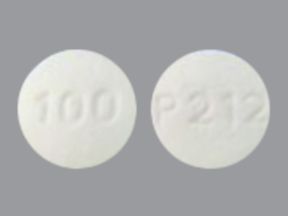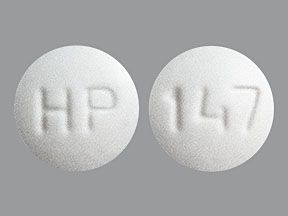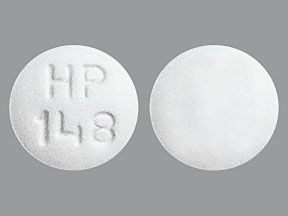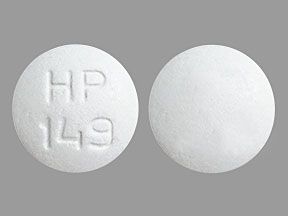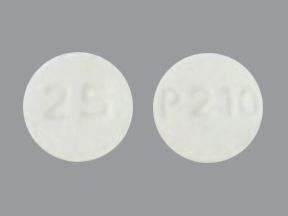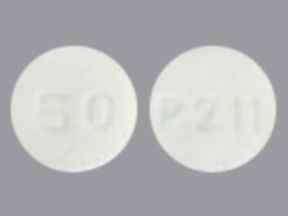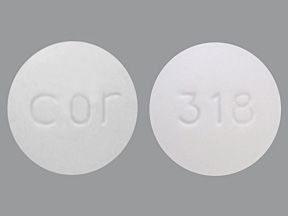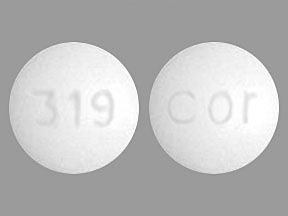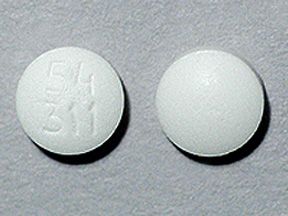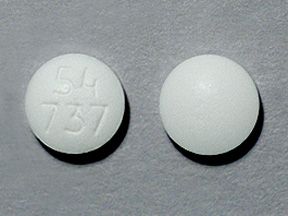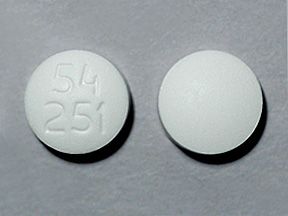Highlights for acarbose
- Acarbose oral tablet is available as a generic drug and a brand-name drug. Brand: Precose.
- Acarbose only comes as an oral tablet.
- Acarbose is used to treat type 2 diabetes.
- Pneumatosis cystoides intestinalis warning: These are gas-filled cysts on the wall of your intestines. They are a rare but serious complication of using acarbose. Symptoms include diarrhea, mucus discharge, rectal bleeding, and constipation. You need to let your doctor know immediately if you experience these symptoms.
- Allergic skin reaction warning: In rare cases, using acarbose can cause an allergic skin reaction. Symptoms include rash, redness, and swelling.
- Liver problems warning: Rarely, acarbose can cause liver damage. Symptoms can include yellowing of the whites of your eyes or skin, stomach swelling, or pain in the upper right portion of your stomach.
Acarbose is a prescription medication. It comes as an oral tablet.
Acarbose is available as the brand-name drug Precose. It’s also available in a generic version. Generic drugs usually cost less. In some cases, they may not be available in every strength or form as the brand-name version.
This drug may be used as part of a combination therapy. That means you may need to take it with other drugs.
Why it’s used
Acarbose is used to treat type 2 diabetes. It helps lower your blood sugar together with diet and exercise.
How it works
Acarbose belongs to a class of drugs called alpha-glucosidase inhibitors. It works by slowing the action of certain enzymes that break food down into sugars. This slows down digestion of carbohydrates to keep your blood sugar from rising very high after you eat.
Acarbose does not cause drowsiness, but it can cause other side effects.
More common side effects
The more common side effects from using acarbose include:
- stomach pain
- diarrhea
- flatulence (gas)
These side effects usually develop during the first few weeks after taking acarbose. They should decrease as you continue to take the medication, typically within a few days or a couple of weeks. Talk to your doctor or pharmacist if they’re more severe or don’t go away.
Serious side effects
Call your doctor right away if you have serious side effects. Call 911 if your symptoms feel life-threatening or if you think you’re having a medical emergency. Serious side effects and their symptoms can include the following:
- Allergic skin reaction. Symptoms may include:
- rash
- redness
- swelling of your skin
- Liver problems. Symptoms may include:
- yellowing of the whites of your eyes or skin
- stomach swelling
- pain in the upper right portion of your stomach
- Pneumatosis cystoides intestinalis. These are gas-filled cysts on the wall of your intestines. They can cause intestinal problems, such as holes, blockage, or bleeding. Symptoms may include:
- diarrhea
- mucus discharge
- rectal bleeding
- constipation
Disclaimer: Our goal is to provide you with the most relevant and current information. However, because drugs affect each person differently, we cannot guarantee that this information includes all possible side effects. This information is not a substitute for medical advice. Always discuss possible side effects with a healthcare provider who knows your medical history.
Acarbose oral tablet can interact with other medications, herbs, or vitamins you might be taking. An interaction is when a substance changes the way a drug works. This can be harmful or prevent the drug from working well.
To help avoid interactions, your doctor should manage all of your medications carefully. Be sure to tell your doctor about all medications, vitamins, or herbs you’re taking. To find out how this drug might interact with something else you’re taking, talk to your doctor or pharmacist.
Examples of drugs that can cause interactions with acarbose are listed below.
Diabetes drugs
When you take certain other diabetes drugs with acarbose, your blood sugar level can get too low, causing hypoglycemia. Signs of hypoglycemia may include fast heart rate, confusion, hunger, sweating, shaking, or feeling weak and dizzy. Examples of these drugs include:
- sulfonylureas, such as glyburide or glimepiride
- insulin
Note: Use glucose tablets or liquid glucose to help manage a hypoglycemic event while you’re taking acarbose. Cane sugar (sucrose) won’t work to treat hypoglycemia while you’re taking acarbose. Use oral glucose (dextrose) products instead.
Thyroid drug
Taking levothyroxine with acarbose may affect your blood sugar level. If you take these drugs together, your doctor will adjust your diabetes medications accordingly.
Estrogens and oral contraceptives
Taking certain hormonal medications with acarbose may affect your blood sugar level. Your doctor will adjust your diabetes medications accordingly. Examples of these drugs include:
- ethinyl estradiol/norgestimate
- ethinyl estradiol/levonorgestrel
- ethinyl estradiol/norethindrone
- ethinyl estradiol/drospirenone
Diuretics (water pills)
Taking acarbose with certain drugs that cause your body to lose water may lead to your blood sugar level getting too high, resulting in hyperglycemia. Examples of these drugs include:
- thiazide diuretics such as:
- hydrochlorothiazide
- chlorthalidone
- loop diuretics such as:
- furosemide
- bumetanide
- torsemide
- triamterene
Corticosteroids
Taking acarbose with corticosteroids may cause your blood sugar level to get too high, resulting in hyperglycemia. Examples of these drugs include:
- hydrocortisone
- prednisone
- prednisolone
- methylprednisolone
Antipsychotic drugs
Taking chlorpromazine with acarbose may cause your blood sugar level to get too high, resulting in hyperglycemia.
Seizure drugs
Taking certain seizure medications with acarbose may affect your blood sugar level. Examples of these drugs include:
- phenytoin
- fosphenytoin
Nicotinic acid
Taking niacin with acarbose can cause your blood sugar level to get too high, resulting in hyperglycemia.
Sympathomimetics
Taking drugs called sympathomimetics with acarbose may cause your blood sugar level to get too high, resulting in hyperglycemia. Examples of these drugs include:
- pseudoephedrine
- phenylephrine
Blood pressure drugs
Taking certain blood pressure drugs called beta-blockers with acarbose may cause your blood sugar level to get too high, resulting in hyperglycemia. It can also delay how long it takes for your blood sugar to return to normal. Beta-blockers can also mask some of the signs of low blood sugar, such as higher than normal heart rate, palpitations, and shakiness. Examples of these drugs include:
- metoprolol
- isoprolol
- atenolol
- nadolol
- propranolol
Tuberculosis drug
Taking isoniazid with acarbose may cause your blood sugar level to get too high, resulting in hyperglycemia.
Heart problem drug
Taking digoxin with acarbose can cause the levels of digoxin in your body to change. If you take these drugs together, your dose of digoxin may need to be adjusted by your doctor.
Disclaimer: Our goal is to provide you with the most relevant and current information. However, because drugs interact differently in each person, we cannot guarantee that this information includes all possible interactions. This information is not a substitute for medical advice. Always speak with your healthcare provider about possible interactions with all prescription drugs, vitamins, herbs and supplements, and over-the-counter drugs that you are taking.
Acarbose comes with several warnings.
Allergy warning
Acarbose can cause a severe allergic reaction. Symptoms may include:
- skin swelling and redness
- hives
- itching
- rash
- fever
- trouble breathing or chest tightness
- blistering or peeling skin
- swelling of your mouth, face, lips, tongue, or throat
Call 911 or go to the nearest emergency room if you develop these symptoms.
Don’t take this drug again if you’ve ever had an allergic reaction to it. Taking it again could be fatal.
Alcohol interaction warning
Alcohol can affect your blood sugar level. It can both increase the risk of low blood sugar (hypoglycemia) as well as increase your blood sugar levels by serving as an additional source of carbohydrates. Talk with your doctor before drinking alcohol.
Warnings for people with certain health conditions
For people with diabetic ketoacidosis: Don’t take this medication if you have diabetic ketoacidosis. Diabetic ketoacidosis is a serious condition that can result in unconsciousness and potentially death. Symptoms of this condition develop slowly. They include dry mouth or being very thirsty, high blood sugar levels, and urinating frequently. If you begin vomiting and suspect you have this condition, call your doctor or go to the hospital immediately. This condition can become life-threatening within a few hours once you’re vomiting.
For people with cirrhosis or liver disease: Don’t take acarbose if you have cirrhosis or severe liver disease. Taking acarbose could make your condition worse.
For people with intestinal disease: If you have certain intestinal diseases, such as inflammatory bowel disease, colonic ulceration, or partial intestinal obstruction, or if you’re predisposed to intestinal obstruction, you shouldn’t take acarbose. Taking it could make your condition worse.
For people who take insulin or a sulfonylurea: When acarbose is taken with these other drugs, it may increase your risk for developing low blood sugar (hypoglycemia). Signs of hypoglycemia may include fast heart rate, confusion, hunger, sweating, shaking, or feeling weak and dizzy. Use glucose tablets or liquid glucose to help manage a hypoglycemic event while taking acarbose. Cane sugar (sucrose) won’t work to treat your hypoglycemia while you’re taking acarbose. Use oral glucose (dextrose) products instead.
Warnings for other groups
For pregnant women: Acarbose is a pregnancy category B drug. That means two things:
- Studies of the drug in pregnant animals have not shown risk to the fetus.
- There aren’t enough studies done in pregnant women to show the drug poses a risk to the fetus.
Tell your doctor if you’re pregnant or plan to become pregnant. Acarbose should be used during pregnancy only if the potential benefit justifies the potential risk to the fetus.
For women who are breastfeeding: Research on lactating rats has shown small amounts of acarbose in the rat milk. It isn’t known if acarbose passes through human breast milk. You and your doctor should decide if you’ll take acarbose or breastfeed.
For children: The safety and effectiveness of acarbose in people younger than 18 years haven’t been proved.
All possible dosages and drug forms may not be included here. Your dosage, drug form, and how often you take the drug will depend on:
- your age
- the condition being treated
- how severe your condition is
- other medical conditions you have
- how you react to the first dose
Dosage for type 2 diabetes
Generic: Acarbose
- Form: oral tablet
- Strengths: 25 mg, 50 mg, and 100 mg
Brand: Precose
- Form: oral tablet
- Strengths: 25 mg, 50 mg, and 100 mg
Adult dosage (ages 18 years and older)
- Typical starting dosage: 25 mg taken three times per day with the first bite of each main meal.
- Dosage increases: This dosage may be increased up to 100 mg taken three times per day with the first bite of each main meal.
Child dosage (ages 0–17 years)
Dosage hasn’t been established for people younger than 18 years.
Special dosage considerations
- For people who weigh 132 pounds (60 kg) or less: You’re at increased risk of having an increase in liver enzymes from taking this medication. The maximum dose is 50 mg taken three times per day with the first bite of each main meal.
- For people with poor kidney function: If your kidney function decreases below a certain cut-off, your doctor may stop your acarbose and switch you to a more appropriate diabetes medication.
Disclaimer: Our goal is to provide you with the most relevant and current information. However, because drugs affect each person differently, we cannot guarantee that this list includes all possible dosages. This information is not a substitute for medical advice. Always speak with your doctor or pharmacist about dosages that are right for you.
Acarbose is used for long-term treatment. It comes with risks if you don’t take it as prescribed.
If you stop taking the drug or don’t take it at all: If you don’t take acarbose as prescribed by your doctor, you may not be able to control the sugar levels in your blood. This can lead to dangerous complications that result from uncontrolled diabetes. These include nerve damage, heart disease, heart attack, stroke, and damage to your eyes and kidneys.
If you miss doses or don’t take the drug on schedule: Your medication may not work as well or may stop working completely. For this drug to work well, a certain amount needs to be in your body at all times.
What to do if you miss a dose: If you forget to take acarbose with the first bite of your meal and you’re still eating that meal, take it while you’re still eating. If you remember your missed dose after eating, skip the missed dose. This medication won’t work unless you take it during a meal.
At the time for your next dose, take only one dose. Never try to catch up by taking two tablets at once. This could result in dangerous side effects.
If you take too much: You could have dangerous levels of the drug in your body. Symptoms of an overdose of this drug can include:
- gas
- diarrhea
- stomach pain
If you think you’ve taken too much of this drug, call your doctor or seek guidance from the American Association of Poison Control Centers at 800-222-1222 or through their online tool. But if your symptoms are severe, call 911 or go to the nearest emergency room right away.
How to tell if the drug is working: You may be able to tell this drug is working if it lowers your blood sugar. You can test your own blood sugar level at home with a glucose meter 1 hour after eating.
Keep these considerations in mind if your doctor prescribes acarbose for you.
General
- You need to take this medication with food. Acarbose only works when there’s food in your stomach. Take it with your first bite of each main meal.
- Don’t crush this tablet. Crushing it may cause more stomach problems like bloating, gas, or stomach pain.
Storage
- Store at room temperature, under 77°F (25ºC). Keep it away from high temperatures.
- Don’t freeze acarbose.
- Keep the medication container tightly closed.
- Don’t store this medication in moist or damp areas, such as bathrooms.
Refills
A prescription for this medication is refillable. You should not need a new prescription for this medication to be refilled. Your doctor will write the number of refills authorized on your prescription.
Travel
When traveling with your medication:
- Always carry your medication with you. When flying, never put it into a checked bag. Keep it in your carry-on bag.
- Don’t worry about airport X-ray machines. They can’t hurt your medication.
- You may need to show airport staff the pharmacy label for your medication. Always carry the original prescription-labeled container with you.
- Don’t put this medication in your car’s glove compartment or leave it in the car. Be sure to avoid doing this when the weather is very hot or very cold.
Clinical monitoring
- Blood sugar level tests: Your doctor will check your blood sugar levels regularly to make sure acarbose is working for you. You may monitor your own blood sugar levels at home if your doctor has instructed you to use a blood glucose meter.
- Liver function tests: Your doctor will check your liver function with blood tests before you take acarbose and during treatment. It’s important to have a starting liver function test to know what your usual liver function is. Later tests will be compared to the first one to see if any changes in liver function have happened. If your liver function is bad or gets worse during therapy, acarbose may not be right for you.
Diet considerations
Follow the diabetes diet suggested by your doctor or nutritionist. If you don’t, you may have more stomach side effects while taking acarbose.
There are other drugs available to treat your condition. Some may be more suitable for you than others. Talk to your doctor about possible alternatives.
Disclaimer: Healthline has made every effort to make certain that all information is factually correct, comprehensive, and up-to-date. However, this article should not be used as a substitute for the knowledge and expertise of a licensed healthcare professional. You should always consult your doctor or other healthcare professional before taking any medication. The drug information contained herein is subject to change and is not intended to cover all possible uses, directions, precautions, warnings, drug interactions, allergic reactions, or adverse effects. The absence of warnings or other information for a given drug does not indicate that the drug or drug combination is safe, effective, or appropriate for all patients or all specific uses.

